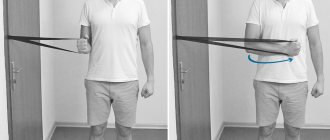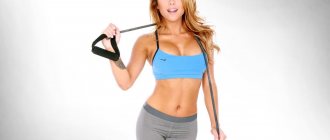The majority of not only beginners, but also experienced athletes, when faced with a skipping rope for the first time, fall into a stupor from ignorance of the basics of correctly performing jumping ropes. Often, precisely because of the fear of being embarrassed by their inability to jump, boxers refuse such a wonderful exercise, and this is completely wrong! In this boxing blog article, we will show you how to jump rope correctly for boxers.
The benefits of jumping rope leave no doubt, but in order to effectively perform the exercise you need to know how to do it correctly and which jump rope to choose.
What is a jump rope, how do different types differ?
All jump ropes consist of a leather or synthetic cord with plastic handles at the ends. But they differ depending on what they are used for. In gymnastics, for example, this sports equipment has no handles at all. Instead, knots are tied at the ends. From the outside, such a projectile looks like an ordinary rope. For boxers, jump ropes are made from the same leather or synthetic cord, but to increase rotations it is made heavier, and thick rubberized handles or others are attached to the ends.
Jump ropes also differ in weight. For school-age children, for example, they make lightweight products - from 100 to 500 grams. Adults use heavier products - up to 1 kg. The heaviest jump rope is a boxing rope. It can reach 3 kg. They are made heavier so that high rotation speeds can be achieved.
Correct Rope for Boxing
Boxing Jump Rope Review
Check out my review of the different types of jump ropes and find out which ones to buy and which ones to avoid.
Plastic Speed Jump Rope with Plastic Handles attached to the rope at an angle of 90 degrees - THE BEST OPTION
This is the ideal jump rope for boxing training. The thin cable, attached to the handles at a 90 degree angle, rotates easily and is ideal for a typical boxing rhythm. The thin plastic handles are easy to hold, allowing you to concentrate on the line and performing tricks.
The 90 degree angle allows the cable to rotate more easily, avoid twisting, and the length is also easy to adjust. The rope itself gives you the perfect amount of resistance (not too little, not too much) which helps develop coordination and rhythm.
These jump ropes are usually purchased online because they are not available in regular stores. You can purchase the same ones I use (called “The Boxer's Training Jump Rope”, link below):
Plastic Licorice Jump Rope WITHOUT 90 degree angle - 2nd best option
This is usually the cheapest and most common option at sporting goods stores. They are absolutely perfect for boxing and are a pretty good buy at only $5. The problem with these jump ropes is that they don't spin as easily or last as long because the cable doesn't attach 90 degrees to the handles. You'll be able to perform all the basic tricks, but double jumps will require a little more effort.
With increased use and speed, the cable will eventually break the plastic handles at the very top. For a beginner jumping rope, this will most likely happen in a couple of months. For an experienced jumper, this can happen in the first week.
These jump ropes are commonly called "Speed Jump Ropes" and cost about $5.99 at your local sporting goods store.
PVC (polyvinyl chloride) jump rope - bad, terrible rhythm
The most obvious PVC jump ropes are those with black cable and black padded handles. They even have ball bearings, which are supposed to rotate the cable more evenly, but in reality they become a hassle when you want to change the length of the cable.
The main problem with PVC jump ropes is that the rope stretches when you spin it at fast speeds, which can easily throw off your rhythm. Sometimes the rubber jump rope will feel too light and it will be difficult for you to get the rhythm right. You'll see what I mean if you try jumping on one.
Skin is bad, slow and hurts
I especially HATE HATE HATE thick leather jump ropes with wooden handles. I don't know why they sell them because they are terrible and useless. My main complaint is that they spin too slowly and also hit you really hard when you get knocked down. One workout with a leather jump rope and your back will look like you've been whipped, like in the Middle Ages.
Other jump ropes to watch out for
Expensive jump ropes - yes, $40 jump ropes spin fast, but that's overkill for boxing. These jump ropes are designed for performing quadruple rotations and truly spectacular tricks.
Beaded jump ropes - These types of jump ropes are okay, but they require too much energy to spin in my opinion. They are good for outdoor use because the plastic protects the cable.
Steel (or metal) jump ropes – My gripe with metal jump ropes is that they spin too easily. They are too easy to spin and too fast for beginners. With such jump ropes, it is more difficult for beginners to learn the rhythm. Another disadvantage is that metal jump ropes do not stretch like plastic ones, so they do not provide sufficient stress to the arms. Such jump ropes are more suitable for those rets who do tricks, who like to do triple or quadruple jumps. You'll need to compare to see what I mean.
Thick Jump Ropes – By and large, thick jump ropes will always take longer to spin because they require more energy. You may not notice it with single jumps, but double jumps will be much more difficult, if not impossible, for beginners. Use thinner ropes so you can develop better coordination through fast spins.
Thick Handles – I avoid jump ropes with thick handles because you end up focusing more on the handle than the rope itself. The lightweight plastic handles allow you to hold the rope confidently and comfortably with a relaxed hand, so you don't have to focus on "holding" the handles. (This is better for learning tricks.) It is also better when the resistance comes from the cable rather than from the weight of the handles. (This makes it easier for you to feel the rope and develop a jumping rhythm.)
Weighted Jump Ropes – A lot of guys try to add weight thinking it will increase arm speed, but I disagree. Weighted jump ropes distract you from the best qualities of a jump rope—developing coordination and rhythm. Adding weight turns this exercise into a basic conditioning exercise and prevents you from developing high-level coordination.
If you want a more challenging jump rope workout, increase the speed and difficulty of the tricks, not the weight.
The correct length for a jump rope
If you step on the middle of the rope with one foot, its handles should reach your armpits. If you have long arms, you might want to make it a little shorter. Beginners typically start with a slightly longer rope so they don't stumble as easily. As you get better, you can make the cable shorter so it spins faster, allowing you to do more advanced tricks and jump at a faster pace. With time and experience, you will find the ideal rope length for you, with which it is easy and stress-free for you to maintain a constant rhythm.
You should also find a good surface to jump on. The floor should be strong, but slightly springy. Softer than concrete, harder than the canvas of the ring. Hard rubber surfaces, which are usually found in halls, should be suitable. Hardwood flooring will work too. You will get pain in the periosteum around your shin if you jump on a surface that is too hard (concrete) or too soft (carpet). Do not use the jump rope outside because the hard ground will tear the rope.
Now that we're energized, excited, and ready to get started...let's get to the jumping!
How and why a jump rope is used in sports
Hundreds of books have been written about the benefits of jumping rope. After all, not a single sports equipment or exercise machine can compare with a jump rope in terms of complex load on muscle groups. Unlike them all, it loads all muscle groups at once. However, not every novice athlete sees it as a serious sports equipment.
Athletes use a jump rope to improve the following properties, characteristics, and parameters of their body:
- increasing endurance (in any sport);
- improving the functioning of arms and legs, as well as all muscle groups;
- increased punching power (for boxers);
- improved breathing;
- raising the tone.
Jumping rope has other benefits as well. Boxers, for example, become more rhythmic in the ring. When carrying out a series of attacks, they become less tired. The jump rope is almost the main sports equipment that boxers use in training, after the punching bag, of course.
How to Jump Rope for Boxing
The best way to learn to jump rope is to jump for 30 minutes every day of the week. (I even jumped for 2 hours, but nothing... everyone doesn't have to be me.) When you get tired and falter, just calmly stop, put your feet up, and start again. It is important to continue to breathe in a constant, calm rhythm, as if you had never tripped at all. Don't sigh or panic.
It's normal if you're so tired that you keep hitting your legs. Just keep jumping until the 30 minutes are up. 30 minutes will seem very long to you, but TRUST ME, TRUST ME, TRUST ME! Your body ADAPTES to this initial rush. The more tired you are, the better—your body WILL learn to work more energy-efficiently. After the first week of this, you will be able to jump rope forever.
I learned to jump rope by simply forcing myself to do nothing but jump rope for an entire week. I locked myself in the gym and jumped rope for 2 hours. I got tired quickly within the first 2 minutes, but after that I calmed my breathing and stopped panicking. All it took was for me to admit that I “sucked.”
I put on my favorite music and just kept jumping. Sometimes I did 15 jumps without losing a beat, sometimes I reached hundreds. I stumbled 4-5 times in a row, but I didn't worry about failure. Every time I tripped, I calmly stepped over the rope and started jumping again. By the next month, I was jumping rope as comfortably as everyone else in the gym. Real story.
Tips for Jumping Rope
Some useful tips for jumping rope for beginners:
- Breathe only through your nose (this calms your breathing and increases your stamina).
- Land on your toes and slightly bent knees.
- Jump straight without twisting into a ball shape in the air (this helps balance).
- Shorter, faster jumps are easier than taller, slower jumps (this is also better for developing rhythm).
- Rotate the cable using your arms, not your shoulders (this will keep your shoulders and trapezius relaxed).
- Let the cable hit the floor softly so that you have a clear rhythm that you stick to.
- Don't stop while resting (or try not to).
- Stop jumping if your calves hurt (you risk getting inflammation of the periosteum).
- The goal is to jump as short as possible (the higher you jump, the more energy you expend).
Jump as low to the ground as possible. The higher you jump, the more energy you use. The trick is to relax as you jump and not push yourself through the jump.
Simple Rope Tricks for Boxing
I'm sure some of you have the incredible urge to jump like Roberto Duran, but you'll have to master those basic jump rope rhythms or basic jump rope "tricks." Mix up your jump rope tricks and keep changing your rhythms to give yourself a good, dynamic workout.
1. Simple Jumps (simple jump on 2 legs)
- jump keeping your feet together
- land on your toes
This is the simplest jump and is the basis for all other jumps. Beginners will often stumble and whip themselves with the cable. You may even get upset and cry. Whatever you do, just start jumping again.
Try to jump 10 times without faltering. Then try to jump 20 times. Over time, you'll be able to jump 100 times without failing, and you'll think it was the hardest thing in the world. (A basic jump will eventually become as easy as breathing. Trust me, you'll get there!)
2. Running in Place
- jump rope, landing on your left leg bent at the knee
- jump rope, landing on your right leg bent at the knee
- keep jumping rope while running in place
- raise your knees high to make the job more difficult
Running in place while jumping rope may be technically easier for some, but physically more difficult, especially when you do it quickly. The load will be better if you raise your knees higher (so that your thighs rise parallel to the floor).
Some boxers prevent themselves from leaning backward by leaning their upper body forward slightly. To add a little intensity to your jump rope routine, try performing ri as quickly as possible every 10 seconds of each round.
3. Side swings
- bring your hands together and rotate the cable on one side
- now rotate it on the other side
- just spread your arms out to the sides to start jumping again
- you can swing from side to side while jumping, or also while walking (for relaxation)
This is a great way to give your shoulders a break or give your legs a break. You can walk around while swinging or just keep jumping to maintain the rhythm; I prefer the latter.
You can also be spectacular by using lateral swings to accelerate the cable before double and triple jumps. Lateral swings are also a great way to get back into rhythm if you get lost; just keep jumping and turning the rope around until you are ready to start jumping again.
4. Jumping on One Leg
- do two jumps on one leg
- then two jumps to another
Jumping on one leg develops additional power, which is necessary to perform some more advanced jumps. I like to do a pyramid routine where I jump on one leg, starting with 2 jumps, ending with 10 jumps, and then going back down to two. For example: 2 times on the left, 2 times on the right, 3 times on the left, 3 times on the right, 4 times on the left, etc., etc. You can also add complexity by moving laterally when you hop on one leg. This will develop the muscles around your hip, as well as your balance.
5. Simple Rearrangement
- hop twice on one leg and then twice on the other (just like you did with one leg hops)
- With the toe of your free leg, touch the ground softly so that it looks like you are jumping on two legs, but in fact all your weight is still on one leg (the knee of your free leg is bent slightly more than the knee of your working leg)
Over time, this will develop your ability to do that boxing changeup and that good shuttle rhythm that all seasoned boxers have. It's not difficult at all, but it's surprising that many boxers still don't do it. If you want a good shuttle (or at least want to stop looking like a beginner), start jumping rope more.
Types of jumps
A jump rope is a seemingly simple object. It seems, twist the rope, and jump for your health. That's all. But there are quite a few types of jumps. Some of them are easy, some are hard. Learning the different types of jumps may seem difficult, but with diligent practice, you can master them all.
The most common and easiest types of jumps:
- The main leap is the simplest technique. The jumper stands on his feet and, rotating the rope, jumps over it. There's nothing fancy here.
- You can diversify your jumps using the criss-cross technique. This is when every second jump the arms change places, forming a cross.
- There is a technique - alternate jumping with legs. In this case, the person simply runs in place and jumps over the rope with each step.
- Along with other types of jumps, jumpers often perform a technique called a double jump. In this case, they jump higher than usual and perform a double rotation of the rope.
Choosing a jump rope
A jump rope is an indispensable element for achieving success in boxing, and its quality and type determine the speed of your progress.
Buddy Lee, an Olympian and athletic trainer, former US Marine and professional jump roper, argues that the main benefit of jumping rope is its ability to develop speed, agility and explosiveness in a person. For this, according to Buddy Lee, a light, high-speed jump rope is best. It allows you to quickly reach maximum speed during the exercise, which increases overall efficiency.
Buddy Lee's YouTube channel - https://www.youtube.com/user/buddyleejumpropes.
The jump rope material is definitely recommended: plastic. Their advantage is durability and low air resistance, which has a positive effect on speed. Their rivals, cotton and leather jump ropes, are inferior to plastic ones both in durability and speed; due to their material, they drag in the air, which slows down the pace of the exercise.
So, we figured out that the best jump rope for boxers, which will help you quickly learn to jump, is a plastic speed jump rope. Reliable and efficient.
Preparation for jumping
Before training with a jump rope, you should decide on the following points:
- Training location
- Dress
- Type of sports equipment.
We will look at each of them separately further.
Requirements for the place of study
You can jump at home too. But you need to take into account that in a small room it will be difficult to make jumps with such a wide scope. You will need an area of approximately 1x2 meters with a free space of about 2.5 meters in height. And if you live in an apartment, then the creaking of the ceiling may upset the neighbors below a little.
Ideally, the floor should be covered with a fairly soft and slightly springy material. For example, a rubber fitness mat. Although, of course, the most elementary thing is to go outside and jump on the platform in front of the house. Of course, the best option is a gym.
What to wear?
Wear shoes that will support your ankle
For training you will need sportswear. A close-fitting uniform made of thin, breathable fabrics is recommended so that the movements are free when jumping, but there is no hindrance during revolutions.
Girls are advised to wear a sports bra. As for footwear, a great choice would be lightweight sneakers with soft ankle support, which provides fairly good lateral stability. Why is this necessary? For joints on which the load will be applied more evenly, so there will be less chance of injury.
Choosing a jump rope
There are 4 main types:
| Weighted | Such jump ropes differ from others in that they have noticeable weight. They are not that easy to use, especially for untrained people. When jumping on such a rope, the body muscles are loaded more than usual, which will help increase their volume. |
| Express | Ideal for burning fat. They allow you to make an unimaginable number of jumps per unit of time. If you want to lose weight as quickly as possible, then you should use a high-speed jump rope for this purpose. |
| Electronic with calorie burn counter | You just need to weigh yourself and then enter your parameters into the counter. And then the “smart” device will independently calculate the exact number of calories burned. Such jump ropes can also be weighted or high-speed. The cost of electronic “weight loss tools” is much higher. |
| Plain with rubber torso | You've probably seen this look in physical education classes at school. They are the most common and inexpensive. They are also suitable for weight loss and cope with this task quite effectively. |
As for the length, standard jump ropes are 2.4 m, 2.70 m, 3.00 m. If you don’t know what length you need, you can use the following guide: for a person with a height of 1 meter 65 centimeters, it’s ideal A jump rope 2.4 meters long is suitable. When choosing a jump rope, you can do this: take it by both handles, stand straight, straighten your back completely and place your foot on the hanging rope. Start lifting the rope up. If you managed to bring the handles to the level of your armpits, then this is the length that suits you.
Don't be afraid to guess wrong with this parameter. It is better to take a rope a little longer, because they all have special hands that allow you to change the size of the rope downward.
Length
Plastic speed jumping ropes are often equipped with a mechanism that allows you to adjust the length of the rope, so when purchasing, pay attention to the possibility of adjustment.
A jump rope that is too long will splat on the floor and cause you to squeak while doing jump rope exercises, while a short rope will cause you to bend over while doing exercises.
To select the desired length of the rope, you need to step with one foot exactly on the center of the rope, pressing it to the floor. Pull both handles to the shoulder and pay attention to the location of the handles relative to the shoulder. The best option for a beginner would be to position the handles perpendicular to the shoulder. This will make it easier to get used to jumping. In the future, as you become more comfortable with the exercise, you can shorten the length to the armpit area to make the exercise more challenging.
This weight forces the boxer to exercise greater control over his movements to avoid tripping. There is less room for mistakes, so reactions and reflexes will be at the highest level with the proper approach.
Selecting a location
It would not be amiss to remind you of the danger of jumping, not so much for the boxer himself, but for the people around him. Therefore, before you start jumping, you should make sure that you will not hit anyone.
The surface you jump on also matters. Concrete and asphalt will be too hard to jump on. Performing the exercise on such a surface will place too much stress on the lower legs and feet, so you should exercise on a shock-absorbing surface such as a rubber floor, a rug, thin carpets, short grass or a wooden floor.











